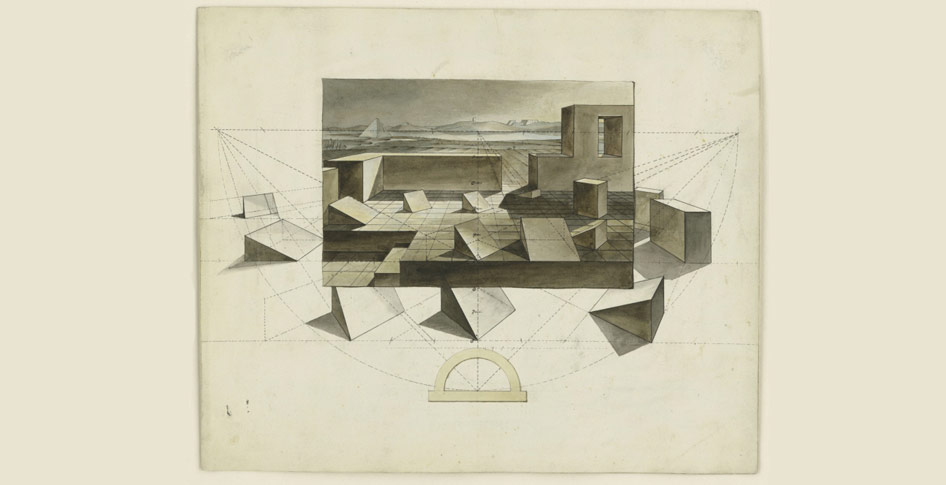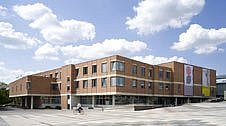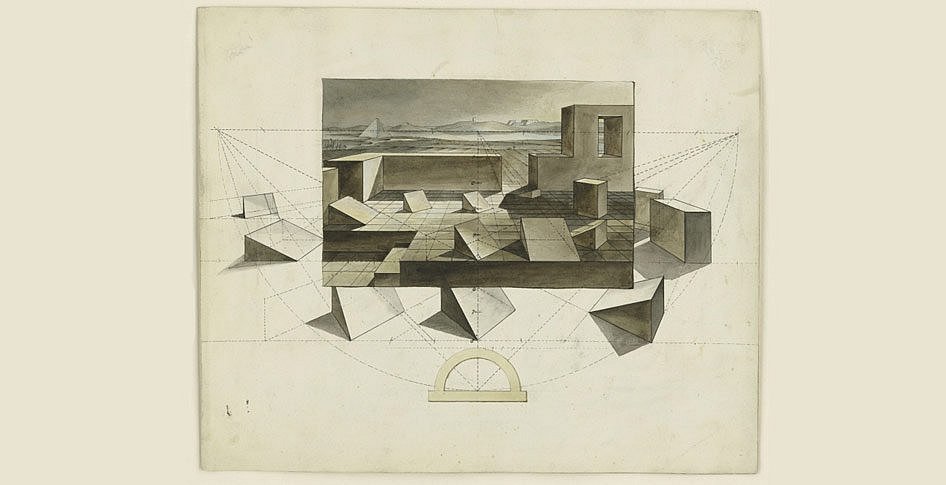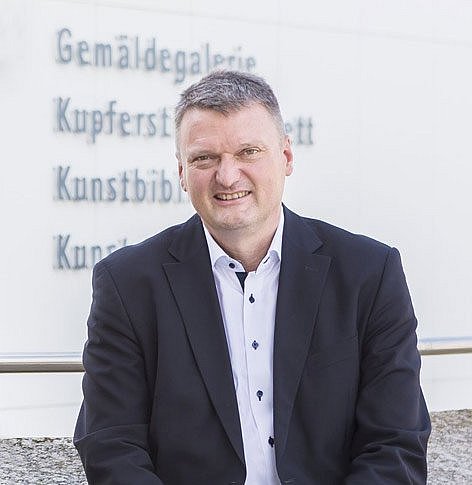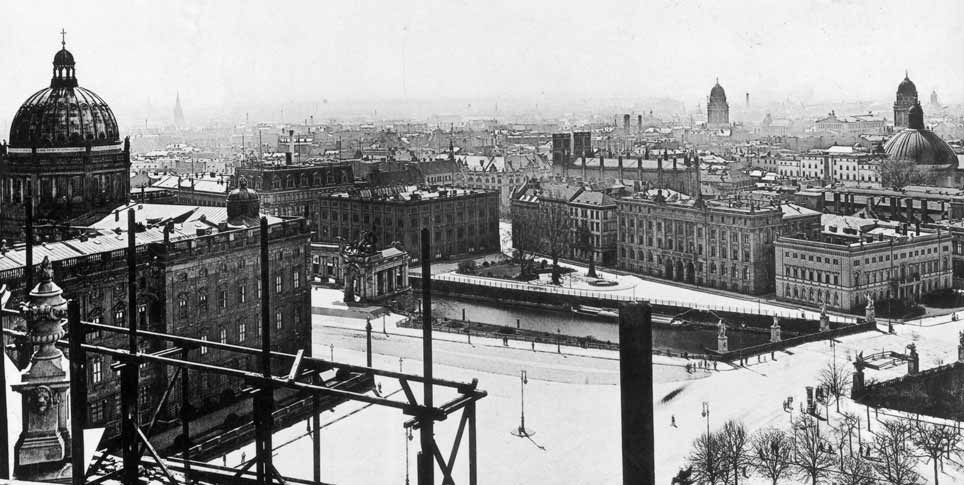Where a facsimile printed on tarpaulins now ripples in the wind, Schinkel's Bauakademie might one day rise again – as a „ Humboldt Forum of Architecture“? The Kunstbibliothek has plenty to offer it, says its acting director, Joachim Brand.
The Kunstbibliothek (Art Library) holds 50,000 architectural drawings, making it one of the most important collections of its kind in Europe. How did this come about?
Joachim Brand: Collecting architectural drawings has always been a core element of the library's mission. In the early years of its existence, beginning in 1868, entire private collections were acquired with the help of generous funding from the Prussian state coffers. Notable among them was the extensive ornament and architecture collection of a French architect, Hippolyte Destailleur. This single purchase, in 1879, brought what was then the library of the Kunstgewerbemuseum (Museum of Decorative Arts) right up to the level of the world's major architectural collections. In addition to the collections, there were donations made by supportive architects and professors at the art school attached to the Kunstgewerbemuseum around the turn of the nineteenth and twentieth centuries. The collection suffered severe losses in the Second World War, but the gaps in the historical record were subsequently filled to some extent, with the financial assistance of the Volkswagen Foundation. In the meantime, bequests by contemporary architects were extending the range of the collection into the architecture of the modern age. One such was the estate of Erich Mendelsohn, comprising 2,700 items. It passed into the possession of the Kunstbibliothek in 1975 – the most important acquisition of the institution's recent history.
You have Italian drawings from the sixteenth to eighteenth centuries, papers from the private collection of Wilhelm von Bode, bequests from Joseph Maria Olbrich, Erich Mendelsohn, and Heinrich Tessenow, and architectural models from the 1960s onwards. Would a reconstructed Bauakademie (Academy of Architecture) be the right place to show this diverse collection?
In the Kunstbibliothek, collecting drawings, photographs, and plans has gone hand in hand with establishing and running an academic research library for nearly 150 years. This integrated dual structure, as a museum and a library, is its most important feature. As to whether a reconstructed Bauakademie should take on the infrastructural tasks of a research center or whether it would primarily serve as a stage for exhibitions and events, that is a question that would have to be decided in the course of the planning process. The Kunstbibliothek would be able to play a central role in either of these scenarios. If our architectural collection were to be presented in this prominent venue, it would mean an immense increase in public visibility in any case.
Kunstbibliothek
Die Kunstbibliothek ist eine interdisziplinäre Forschungseinrichtung mit einer der weltweit größten Museumsbibliotheken. Hinzu kommen bedeutende Sammlungen zur Geschichte der Architektur, der Fotografie, des Grafikdesign und der Mode sowie zur Buch- und Medienkunst. Die Bibliothek und die Sammlungen repräsentieren gemeinsam das ganze Quellenspektrum der kunst- und kulturwissenschaftlichen Forschung. Sie ist am Kulturforum (Museumssammlungen, kunstwissenschaftliche Bibliothek), im Archäologisches Zentrum (Archäologische Bibliothek) und im Museum für Fotografie (Ausstellungsort für die Sammlung Fotografie) vertreten.
How do the works in the Kunstbibliothek stand in relation to other architectural collections in Berlin?
Berlin can look back on an exceptional and internationally outstanding architectural past. There are few other places where you can experience a comparable wealth of important buildings by first-class architects. They reflect the political forces and creative ideas that have shaped the last few centuries: from Prussian Baroque to early Modernism as well as twentieth-century totalitarianism and post-reunification reconstruction.
The largest architectural collections in Berlin – for example, the architecture museum of the Technische Universität, the Berlinische Galerie and the Akademie der Künste – contain a wealth of drawings, archives, models, and photographs relating to buildings in Berlin. The Kunstbibliothek complements them by broadening the perspective and depicting the architectural history of Europe from the Renaissance to the present day – in terms of its theoretical grounding in architectural treatises and publications, accentuated and exemplified by historical drawings.
What should a museum of architecture or a center for the built environment that is based in Berlin deliver, in your opinion?
The questions of how we build, how we live, and how we shape our environment have gained completely new significance in recent years. The consequences of rural exodus to the cities, migration, and globalization are affecting the whole world today. In their local manifestations, such as housing shortages, gentrification, and traffic problems, they have a direct impact on the lives of Berliners.
A new Bauakademie should be a place that takes account of such developments. It should join in current debates and offer space for members of the public to take part in them. Exhibitions with a local or a European focus on architectural topics could provide a meaningful introduction to more fundamental reflections on the significance of architecture and its importance in our lives. Working closely with the Humboldt Forum, the new Bauakademie could become an architectural forum that places the European architectural tradition in a global context and promotes new thinking on the challenges of urbanization.
